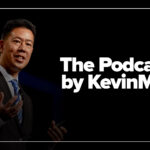Tonight, my lab quietly changed what it considers a “normal” ApoB. On Monday, my patient’s ApoB of 98 mg/dL was comfortably green. On Tuesday, that same number was flagged high, a 30-point swing in the normal range overnight. No new evidence. No new trial. No public health crisis. Just a reference-range recalibration. And with that one quiet adjustment, millions of people who went to bed “normal” may wake up “abnormal.”
Reference ranges are not carved into stone tablets. They’re statistics. A lab looks at a reference population, decides where the middle 95 percent fall, and draws lines around it. That’s it. Those lines have nothing to do with mortality thresholds or cardiovascular events. ApoB is a good marker of atherogenic burden, but risk with ApoB is gradual, not binary. There’s no cliff at 70 or 80 or 100 mg/dL where heart attacks suddenly explode. Those numbers are policy targets, not physiologic truths. When a lab shifts its range, nothing changes in the patient’s biology. What does change is the behavior downstream: more follow-ups, more tests, and more scans.
I can already see how this plays out. A primary care doctor opens the EMR, sees a bright red flag, and orders a calcium scan “just to be safe.” Someone else adds a statin or PCSK9 inhibitor. A nervous patient Googles “high ApoB” at 2 a.m. and books an unnecessary consult. No one’s risk profile changed in 24 hours. But the medical machinery started rolling anyway. That’s what happens when we move the goalposts without changing the game.
And it’s not just about one patient. Multiply this kind of shift across the country and it becomes a quiet, expensive wave of “preventive” activity with no measurable impact on actual outcomes. It’s not prevention. It’s label inflation.
If I’m managing ApoB, I care about context: absolute risk, plaque burden, and trajectory over time. I want to know if there’s actual atherosclerosis, not just a number that tripped a wire in the lab’s algorithm. No study has ever shown that lowering ApoB in someone who became “abnormal” only because the reference range changed improves their odds of living longer or better. This is theater. It gives the illusion of medical precision when what we really did was redraw a line.
This isn’t new. We did it with PSA. We did it with TSH. We did it with vitamin D, HbA1c, and LDL. Each time, the story is the same: Someone quietly tightens a range, clinicians react as if the world has changed, and downstream spending explodes. We medicalize the healthy. We create patients out of people who were perfectly fine the day before. And we pat ourselves on the back for “early detection,” even when outcomes stay flat.
I will now have to tell my patients this: “Your lab didn’t discover new risk overnight. It just changed its math. You didn’t get sicker; the bar moved.”
Guideline creep is sneaky. It looks like good medicine. But most of the time, it’s just a false alarm economy: big costs, no benefit, and a whole lot of unnecessary anxiety.
Larry Kaskel is an internist and “lipidologist in recovery” who has been practicing medicine for more than thirty-five years. He operates a concierge practice in the Chicago area and serves on the teaching faculty at the Northwestern University Feinberg School of Medicine. In addition, he is affiliated with Northwestern Lake Forest Hospital.
Before podcasts entered mainstream culture, Dr. Kaskel hosted Lipid Luminations on ReachMD, where he produced a library of more than four hundred programs featuring leading voices in cardiology, lipidology, and preventive medicine.
He is the author of Dr. Kaskel’s Living in Wellness, Volume One: Let Food Be Thy Medicine, works that combine evidence-based medical practice with accessible strategies for improving healthspan. His current projects focus on reevaluating the cholesterol hypothesis and investigating the infectious origins of atherosclerosis. More information is available at larrykaskel.com.













![Why your migraine might be causing your tinnitus [PODCAST]](https://kevinmd.com/wp-content/uploads/Design-4-190x100.jpg)
